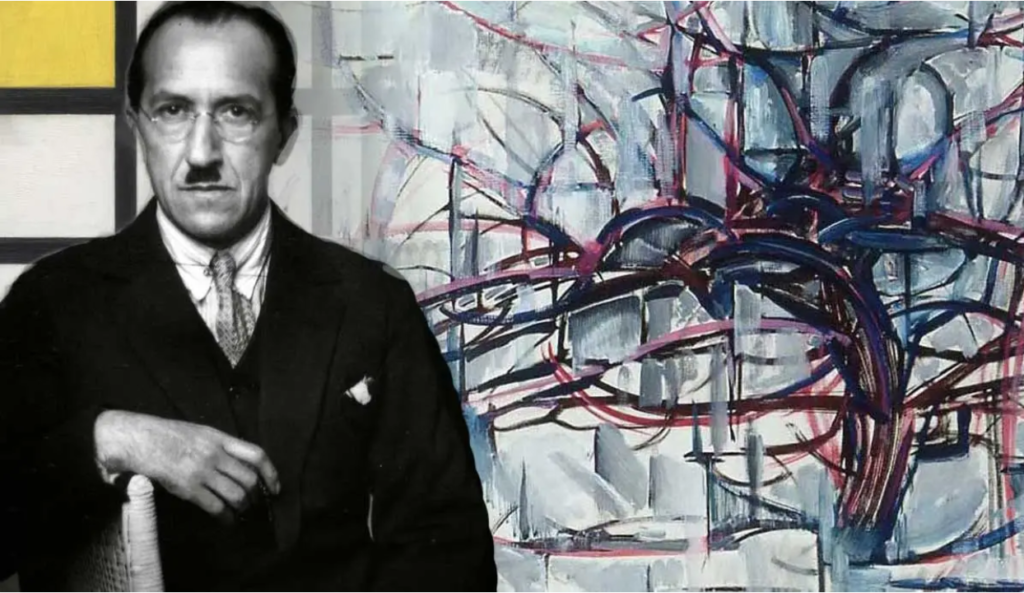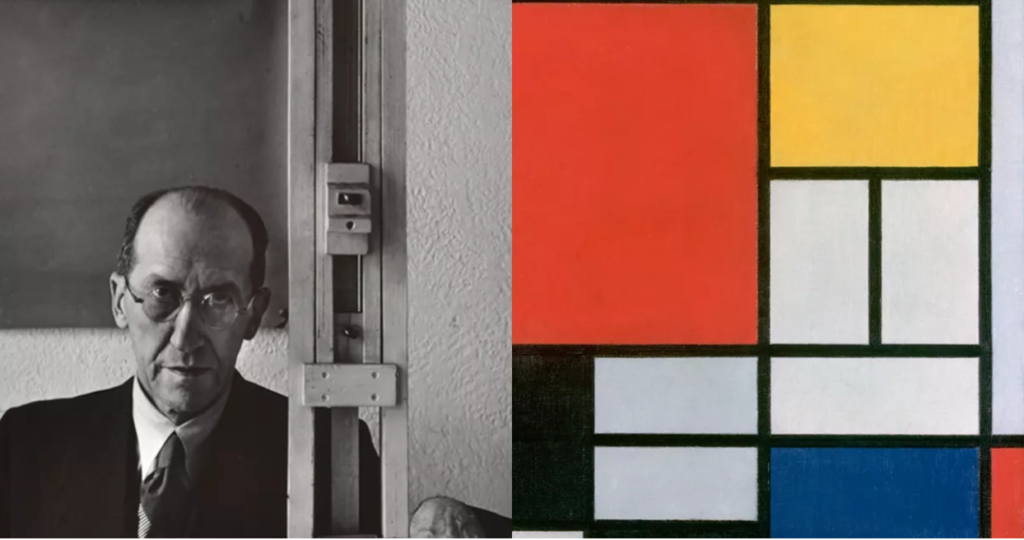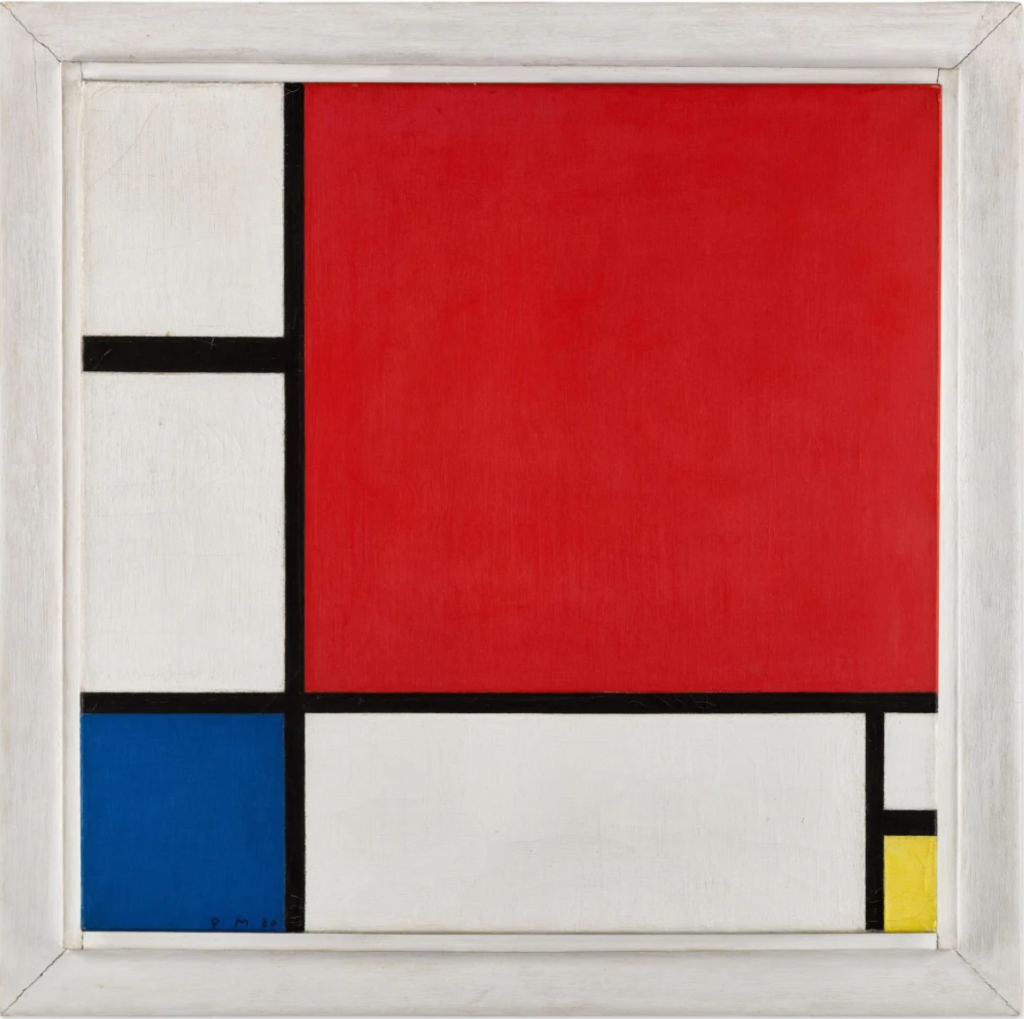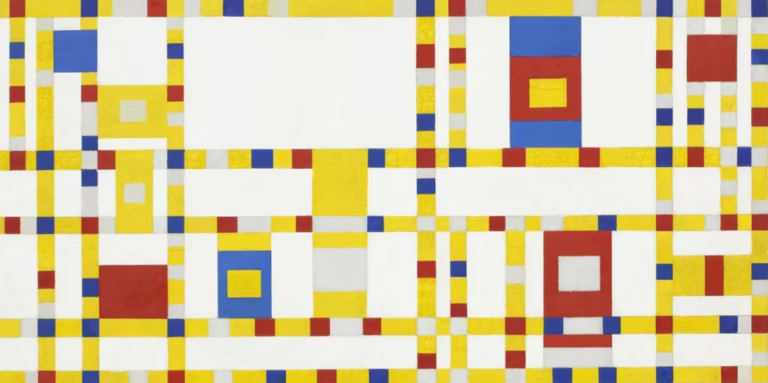Dutch modernist Piet Mondrian (1872–1944) pioneered 20th-century abstraction, employing a strict yet highly creative visual language of straight lines and primary colors that evolved into his iconic Neoplastic style.
To mark the 150th anniversary of the artist’s birth, Ridinghouse and Kunstmuseum Den Haag have published an English translation of “Piet Mondrian: A Life” — the bold and audacious biography authored by the late Hans Janssen, a former chief curator at Kunstmuseum Den Haag, which was renowned for its extensive collection of Mondrian’s works. The newly translated biography provides an overdue and captivating narrative of the enigmatic genius and marks a significant milestone as the first comprehensive Mondrian biography in English since the 1950s.
Leveraging his original research, Janssen combines the contributions of eminent scholars and newly discovered letters, writings, and archival materials to unveil fresh and unexpected insights into the artist’s life and the circles he frequented. Instead of abiding by a pragmatic chronological account of Mondrian’s journey, Jannsen exposes the layers of Mondrian’s prodigious mind and unique perspectives, skillfully undermining any inclination to portray Mondrian as an eccentric outlier and defying the shackles of representation and narrative.
Early Earthy Palettes and Dutch Landscapes
Born in the Netherlands, Mondrian’s journey into art commenced in his formative years. He honed his skills at the Academy of Fine Arts in Amsterdam, immersing himself in the era’s naturalistic and realistic style prevalent among post-impressionists. His early works portrayed landscapes teeming with pastoral imagery of his native Netherlands, brought to life with an earthy palette of hues. But this idyllic phase was merely the prologue to an extraordinary artistic journey.
The first seismic shift in Mondrian’s artistic journey occurred in 1911 when the artist encountered the influential works of Cubist luminaries Pablo Picasso and Georges Braque at the Moderne Kunstkring exhibition in Amsterdam. Subsequent migration to Paris propelled him towards a radical reimagining of art, as the subjects dissolved into abstraction, their form obliterated by the vibrant strokes of color. He bid farewell to recognizable subjects, giving birth to his iconic abstract style. His works became canvases of vibrant, non-representational colors divided by a symphony of quadrilateral segments.

The War Years: Stricter Palette, De Stijl Movement
Mondrian’s austere demeanor was characterized by a profound sense of order and intellectual rigor, mirroring the meticulous geometric precision of his works. During the tumultuous years of World War I, Mondrian became even stricter in his artistic ethos — restricting his palette to primary colors that dared not mix. He became a painter consumed by his quest for purity and order.
Collaborating with like-minded artists, he co-founded the De Stijl movement with his compatriot Theo van Doesburg, a venture that formalized his artistic philosophy. The De Stijl movement, meaning “The Style” in Dutch was an avant-garde faction that sought to distill art to its fundamental essence, shedding the superfluous in favor of elemental geometric forms and primary colors.
Mondrian’s grid-based compositions became a testament to this purist ideology. With an unwavering commitment to the grid, he introduced a visual lexicon of horizontal and vertical lines intersecting at right angles, alongside the primary colors—red, yellow, and blue—along with non-colors, white, and black. They were visual spectacles and profound articulations of his spiritual quest for universal harmony, embodying a fervent belief in the potential for art to transcend worldly disharmony and encapsulate a spiritual realm within the structure of line and color.
Neoplasticism: The Spiritual Quest in Art
The 1920s marked the dawn of Mondrian’s most distinctive phase, encapsulated in his “compositions.” Mondrian articulated his theory of Neoplasticism, a doctrine underpinning his vision of art as a “pure representation of the human mind,” manifesting in aesthetically purified, abstract forms, with “straight lines” and “clearly defined primary colors” at its core. Through neo-plasticism, Mondrian sought to capture the fundamental essence of reality, purging his compositions of representational distractions. His pieces’ interplayed grids, colors, and spaces elicited a sense of rhythm and equilibrium. Precise yet arbitrary, these canvases created a symphony of visual components that echoed the pulse of existence with asymmetrical squares and intersecting lines that radiated a sense of balance.
As the threat of European fascism loomed, Mondrian sought refuge in London before crossing the Atlantic to New York in 1940. In New York, the support of Peggy Guggenheim allowed Mondrian to assimilate into the bubbling New York Avant Garde art scene. Inspired by the metropolis’s pulsating energy, Mondrian’s work evolved to embrace double and colored lines, animated by squares reminiscent of the city’s dazzling lights and vibrant rhythms.

The Man and Mind Behind the Grid
Often mistaken to be the product of cold calculation, Mondrian’s profound belief in the transformative power of simplicity exuded a personality marked by fastidious attention to detail — as if every aspect of his existence were subject to the meticulous grid he applied to his paintings.
Always seen in a well-tailored suit, he was known for his crisp and adorned attire reminiscent of his compositions. He shunned the frivolities of fashion, favoring simplicity and the same stark palette he employed in his compositions. Mondrian’s discourse was equally disciplined, as he sought intellectual pursuits and conversations around the search for universal harmony.
This inclination for minimalism was not limited to his art but permeated his lifestyle. Mondrian’s studio and living spaces were sparse and meticulously organized, with furniture carefully arranged to create a balanced equilibrium. A single potted plant or a Mondrian original on the wall was all the decoration one could find in his studio.
Despite his temperance and exterior of exactitude, he was an avid dancer who frequented New York City’s jazz clubs, immersing himself in the rhythms he sought to capture in his art. His love for boogie-woogie music was instrumental in creating his final, unfinished work, Victory Boogie Woogie (1944).

The Last Stroke: A Legacy that Transcends Time
Utopian ideals and an unswerving commitment to abstraction drove Mondrian. Mondrian passed away in 1944 at the age of 71. His compositions were enigmatically yet harmoniously arranged, allowing him to leave a legacy that fused spirituality and meticulous geometry. His work has come to symbolize the very essence of Modernist Art. It continues to captivate, inspiring movements such as the Bauhaus, minimalism, constructivism, and myriad post-modern and contemporary projects.
In 2015, Mondrian’s 1929 piece titled Composition No III, with Red, Blue, Yellow and Black sold for $50.6 million. And in 2022, one of Piet Mondrian’s iconic abstract paintings, Composition No. II (1930), sold for $51 million at Sotheby’s New York — more than 20 times what it sold 40 years ago when it was last auctioned.
What sets Mondrian apart is his innovative technique and his profound spiritual connection to art. In his pursuit of abstraction, he believed art could transcend the earthly realm and reach the “spiritual realm.” His works exuded a sense of harmony and equilibrium, playing with the viewer’s perception of color, line, and space.
From his early days as a student in Amsterdam to his post-World War I life in Paris, his time in London and New York from 1938 until his passing, Mondrian emerged as an artist constantly engaged with the evolving world around him. Contrary to the typical portrayal of him as a lonely and isolated figure, Mondrian was an artist actively responding to the dawn of modernity and pioneering the evolution of art for the contemporary world.
In his eloquent words, “led by high intuition, and brought to harmony and rhythm, these basic forms of beauty, supplemented if necessary by other direct lines or curves, can become a work of art, as strong as it is true.”



![[Left] Kusama with her piece Dots Obsession, 2012, via AWARE, [Right] Yayoi Kusama (Courtesy Whitney Museum of American Art) | Source: thecollector.com](https://www.artdex.com/wp-content/uploads/2024/04/Left-Kusama-with-her-piece-Dots-Obsession-2012-via-AWARE-Right-Yayoi-Kusama-Courtesy-Whitney-Museum-of-American-Art-Source-thecollector.com--300x172.png)



